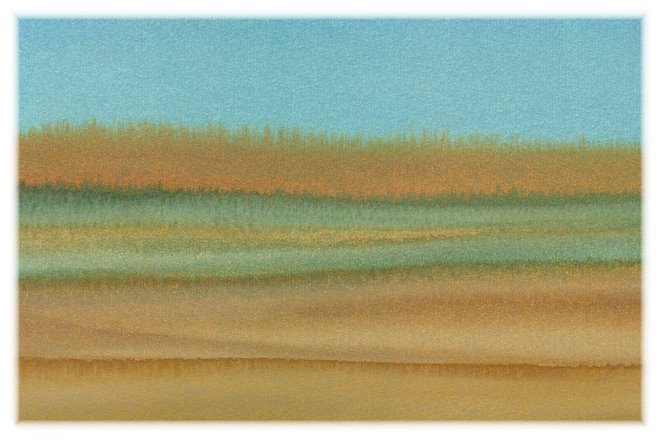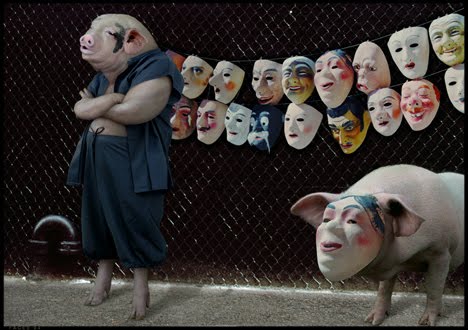aformadidea.com
Presepio, o nella forma poetica presepe, è un vocabolo che indica la greppia nella stalla e poiché nella greppia nacque Gesù, con questo termine, per estensione, è designata la stalla di Betlemme dove, secondo la tradizione evangelica, ciò accadde.
Presepe quindi è detta la raffigurazione plastica della natività e dell’ambiente circostante, nota genuina e caratteristica del rito cristiano, specialmente cattolico.
Da ciò l’uso antico e tradizionale nel mondo latino di piccoli o grandi presepi allestiti nelle chiese.
La rappresentazione plastica della natività si fa risalire comunque a San Francesco d’Assisi che, nel 1223 a Greccio, per ravvivare la fantasia della povera gente, volle improvvisare, con pastori veri e fedeli esultanti, la scena della Natività rendendo più suggestive le funzioni della notte di Natale.
Dalle chiese l’uso passò poi alle case ed ebbe il massimo sviluppo nel 1600-1700, soprattutto nell’area dell’Italia centro-meridionale. Dalla primitiva ingenuità della scena si giunse a forme scenografiche di popolaresca fastosità.
Presepe quindi è detta la raffigurazione plastica della natività e dell’ambiente circostante, nota genuina e caratteristica del rito cristiano, specialmente cattolico.
Da ciò l’uso antico e tradizionale nel mondo latino di piccoli o grandi presepi allestiti nelle chiese.
La rappresentazione plastica della natività si fa risalire comunque a San Francesco d’Assisi che, nel 1223 a Greccio, per ravvivare la fantasia della povera gente, volle improvvisare, con pastori veri e fedeli esultanti, la scena della Natività rendendo più suggestive le funzioni della notte di Natale.
Dalle chiese l’uso passò poi alle case ed ebbe il massimo sviluppo nel 1600-1700, soprattutto nell’area dell’Italia centro-meridionale. Dalla primitiva ingenuità della scena si giunse a forme scenografiche di popolaresca fastosità.
Figure in terracotta dipinte a mano con vestiti impreziositi
presepenapoletano.it
Una vera fioritura artistica si ebbe nel meridione, a Napoli in particolare, nel XVIII secolo, quando non solo provetti artigiani, ma anche noti scultori si cimentarono nella realizzazione del presepe. Pregevole è quello che occupa una sala intera del Palazzo Reale borbonico di Caserta, composto da oltre 1200 figure in un mirabile impianto scenografico che si anima dei colori e degli ambienti della realtà popolare dell’epoca.
Le statuine policrome, nella storia del presepe, sono state costruite in un primo tempo in legno (come è ancora in uso in alcune zone alpine del nord Italia), successivamente si diffusero figure in cera o in terracotta, come nella tradizione napoletana, abbigliate secondo i costumi della popolazione nel XVII-XVIII secolo.
Nel Salento l’uso di statuine in terracotta si è affiancato a quello di figure in cartapesta, tipiche della mirabile tradizione leccese.
Le statuine policrome, nella storia del presepe, sono state costruite in un primo tempo in legno (come è ancora in uso in alcune zone alpine del nord Italia), successivamente si diffusero figure in cera o in terracotta, come nella tradizione napoletana, abbigliate secondo i costumi della popolazione nel XVII-XVIII secolo.
Nel Salento l’uso di statuine in terracotta si è affiancato a quello di figure in cartapesta, tipiche della mirabile tradizione leccese.
Natività e particolari presepiali in cartapesta
presepenapoletano.it
The story of a tradition
In Italian the word presepio, poetic presepe, indicates just the crib where Jesus Christ was born in Betlehem, according to evangelical tradition.
So presepe is a plastic reproduction of nativity in its environment, genuine and characteristic note of the Christian custom, particularly catholic. In fact, small and big presepe are built in churches, since ancient times.
The first plastic reproduction of nativity, however, was attributed to St. Francis from Assisi who, in 1223 in Greccio, in order to revive the imagination of poor people, improvised, with real shepherds and exultant believers, the scene of nativity making even more suggestive the Christmas services.
From churches the custom passed to houses and had the greatest diffusion in 1600-1700, especially in the central-southern area of Italy. From the original ingenuity of the scene it reached scenographical figures of popular magnificence.
A true artistic blossom spread in southern Italy, particulary in Naples in the 18th century, when not just skilled craftsmen, but also famous sculptors competed in building presepe. A valuable one fills an entire hall in the Royal Palace in Caserta, made up of over 1200 statues in a wonderful scenographical plant which takes life from colours and surroundings of the popular reality of the times.
The multi-coloured statuettes, in the history of presepe, where once built with wood (as it is still done in some alpine areas in northern Italy), then wax or terra-cotta figures were made, in Naples for example, dressed in traditional customs of 17th-18th centuries. In the Salento area, the use of terra-cotta statuettes goes with that of papier mâché figures, typical of the wonderful tradition in Lecce.
In Italian the word presepio, poetic presepe, indicates just the crib where Jesus Christ was born in Betlehem, according to evangelical tradition.
So presepe is a plastic reproduction of nativity in its environment, genuine and characteristic note of the Christian custom, particularly catholic. In fact, small and big presepe are built in churches, since ancient times.
The first plastic reproduction of nativity, however, was attributed to St. Francis from Assisi who, in 1223 in Greccio, in order to revive the imagination of poor people, improvised, with real shepherds and exultant believers, the scene of nativity making even more suggestive the Christmas services.
From churches the custom passed to houses and had the greatest diffusion in 1600-1700, especially in the central-southern area of Italy. From the original ingenuity of the scene it reached scenographical figures of popular magnificence.
A true artistic blossom spread in southern Italy, particulary in Naples in the 18th century, when not just skilled craftsmen, but also famous sculptors competed in building presepe. A valuable one fills an entire hall in the Royal Palace in Caserta, made up of over 1200 statues in a wonderful scenographical plant which takes life from colours and surroundings of the popular reality of the times.
The multi-coloured statuettes, in the history of presepe, where once built with wood (as it is still done in some alpine areas in northern Italy), then wax or terra-cotta figures were made, in Naples for example, dressed in traditional customs of 17th-18th centuries. In the Salento area, the use of terra-cotta statuettes goes with that of papier mâché figures, typical of the wonderful tradition in Lecce.

























Nessun commento:
Posta un commento